Home>Articles>17 Ways To Make An Impact With Exterior Lighting For Your Home
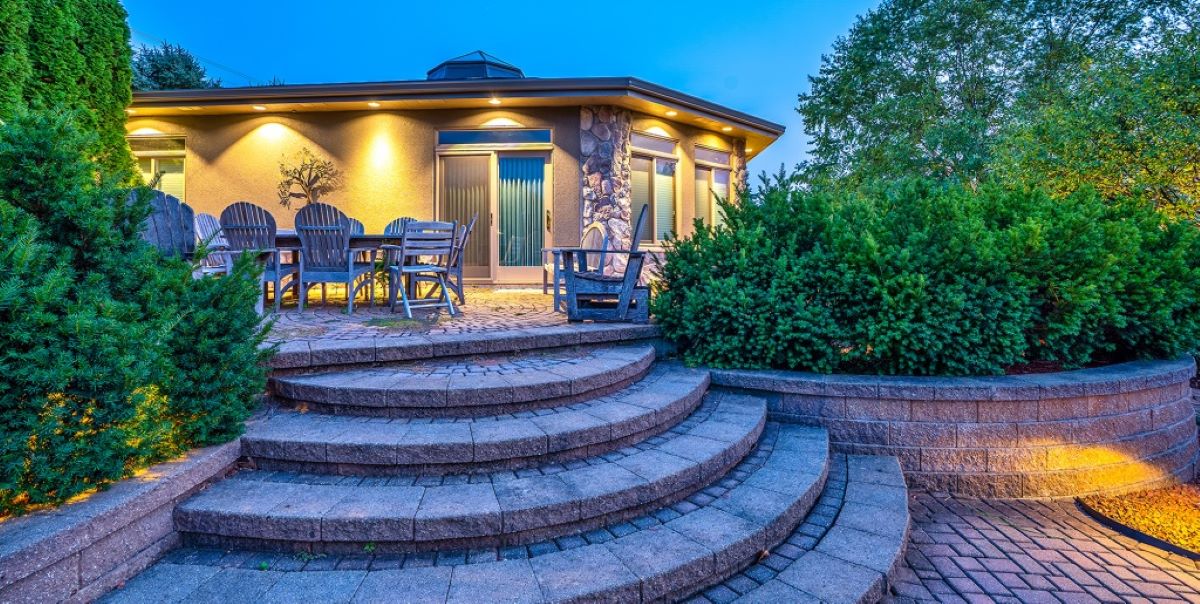

Articles
17 Ways To Make An Impact With Exterior Lighting For Your Home
Modified: August 20, 2024
Discover 17 articles showcasing innovative ways to elevate your home's exterior with stunning lighting designs. Create a lasting impression with our expert tips and ideas.
(Many of the links in this article redirect to a specific reviewed product. Your purchase of these products through affiliate links helps to generate commission for Storables.com, at no extra cost. Learn more)
Introduction
Exterior lighting plays a crucial role in enhancing the aesthetics, functionality, and safety of your home. Whether you want to create a warm and welcoming atmosphere or highlight architectural features, the right lighting can make a significant impact on the overall appearance of your property.
In this article, we will explore 17 effective ways to make an impact with exterior lighting for your home. From choosing the right fixtures to incorporating smart lighting control systems, these tips will help you transform your outdoor space into a visually appealing and inviting environment.
So, let’s dive in and discover how you can elevate the beauty and functionality of your home through strategic exterior lighting.
Key Takeaways:
- Elevate your outdoor space with strategic exterior lighting, from highlighting architectural features to creating a warm and inviting ambiance. Choose the right fixtures, incorporate smart lighting, and maintain your lighting design for lasting impact.
- Transform your home into a visually stunning and inviting retreat with exterior lighting. Accentuate architectural details, illuminate pathways, and utilize colorful lighting to set the mood. Embrace energy-efficient solutions and smart lighting control for a seamless and enchanting outdoor experience.
Read more: 5 Ways To Make Art Impactful At Home
Choosing the Right Exterior Lighting Fixtures
When it comes to exterior lighting, selecting the right fixtures is crucial for both aesthetic appeal and functionality. There are various types of fixtures to choose from, including wall sconces, pendant lights, floodlights, and pathway lights. Consider the architectural style of your home and the desired lighting effect to guide your selection.
For a modern and sleek look, opt for fixtures with clean lines and minimalist designs. Alternatively, if you have a traditional or rustic home, choose fixtures with ornate details and timeless appeal. Additionally, consider the finish of the fixtures to ensure they complement the overall color scheme and materials used on the exterior of your home.
Pay attention to the size of the fixtures as well. Large fixtures may overpower a small home, while tiny fixtures may get lost on a large property. Finding the right balance is key to achieving a harmonious and visually pleasing lighting design.
Lastly, consider the type of lighting technology used in the fixtures. LED lights are energy-efficient, long-lasting, and offer a range of color temperatures to suit various moods and occasions. They are also environmentally friendly, reducing both energy consumption and maintenance costs.
By taking the time to choose the right exterior lighting fixtures, you can set the foundation for a successful lighting design that will enhance the overall appearance of your home.
Highlighting the Architecture of Your Home
The architecture of your home is a work of art, and exterior lighting can be used to showcase its unique features and enhance its visual appeal. By strategically placing lights, you can draw attention to architectural elements such as columns, arches, and intricate detailing.
Consider using uplights at the base of columns or pillars to create a dramatic effect and highlight their verticality. Wall sconces can be installed near architectural details to cast an illuminating glow and create depth and texture on the facade of your home.
Another effective way to highlight the architecture of your home is by using grazing or wall washing techniques. These involve placing light fixtures near the bottom of a wall and aiming them upwards to create a soft wash of light that accentuates the texture and patterns of the surface.
When illuminating architectural features, it’s important to consider the color temperature of the light. Warm white or neutral white light can enhance the warmth and richness of traditional architectural styles, while cool white or daylight-colored light can bring out the clean lines and modern aesthetics of contemporary designs.
By selecting the appropriate lighting fixtures and techniques, you can emphasize the architectural beauty of your home during the evening hours. This not only adds visual interest but also enhances the overall value and curb appeal of your property.
Creating a Welcoming Entrance
Your home’s entrance is the gateway to your personal sanctuary. By incorporating the right exterior lighting elements, you can create a warm and inviting atmosphere that welcomes both guests and residents alike.
Start by installing a well-designed and aesthetically pleasing porch light. This fixture will not only provide functional lighting but also serve as a focal point that sets the tone for the rest of your home’s exterior. Choose a style that complements the architectural design of your home and consider dimmable options to adjust the lighting intensity based on different occasions.
In addition to porch lights, consider adding lighting accents to the entrance pathway or steps. Path lights or recessed lights along the walkway can guide visitors safely to your front door while adding a touch of elegance. Low-voltage lights are a great choice for these areas as they provide a soft glow and are energy-efficient.
To create a welcoming ambiance, incorporate lighting fixtures that highlight key features of your entrance, such as beautiful landscaping, potted plants, or architectural details. Uplights can be used to showcase trees or shrubs, while well-placed spotlights can emphasize unique architectural elements like pillars or an intricate doorway.
Finally, consider adding a personal touch by installing decorative string lights or lanterns to your entrance area. These whimsical lighting elements not only add visual interest but also create a cozy and inviting atmosphere.
By carefully selecting and strategically placing exterior lights at your entrance, you can create a warm and inviting ambiance that leaves a lasting impression on visitors and makes you feel proud to come home.
Illuminating Pathways and Walkways
Illuminating pathways and walkways not only adds an element of safety but also enhances the overall beauty of your home’s exterior. When properly lit, pathways become a guiding beacon, inviting guests to explore your property and ensuring they navigate safely at night.
Start by assessing the layout and design of your pathways. Determine the key areas that need to be illuminated, such as curves, steps, and intersections. For straight pathways, evenly spaced path lights can create a beautiful and well-lit walkway. Place them along the edges or alternating sides to provide a clear path marker.
When selecting path lights, consider their style and size, ensuring they blend harmoniously with the surrounding landscape. If you have a modern home, sleek and minimalist path lights may be the ideal choice. For a more traditional or rustic property, fixtures with ornate details or lantern-style lights can add a touch of elegance.
For added visibility and safety, consider installing step lights on any stairs or changes in elevation along the pathway. These lights will ensure that guests can easily navigate these areas, reducing the risk of slips and falls in the dark.
In addition to path lights, consider using ground recessed lights or string lights to create a magical and whimsical effect along your pathways. These lighting techniques can add depth and dimension to your outdoor space while complementing the overall lighting design of your home.
By strategically illuminating your pathways and walkways, you not only enhance safety but also create a visually stunning landscape that will impress both guests and passersby.
Accentuating Trees and Landscaping Features
Trees and landscaping features are an integral part of your outdoor space, and with the right lighting, you can transform them into stunning focal points that enhance the beauty of your home. By illuminating trees and other landscaping elements, you can create a captivating and dynamic nighttime landscape.
When it comes to accentuating trees, consider using uplighting techniques. Placing light fixtures at the base of trees and angling them upward can create a dramatic effect by showcasing the trunk, branches, and foliage. This technique not only adds visual interest but also adds depth and dimension to your landscape.
Choose a warm white light to highlight the natural colors and textures of the trees. Experiment with different angles and distances to create unique lighting patterns and shadows. If you have multiple trees in your yard, strategically place the lights to create a cascading effect that draws the eye from one tree to another.
In addition to trees, consider illuminating other landscaping features such as shrubs, flower beds, or rock formations. Low-voltage fixtures or well lights can be installed at ground level to graze light up the textured surfaces, creating a visually appealing display of light and shadow.
One effective technique is silhouetting, where you place a light fixture behind a tree or shrub to create a striking silhouette against a wall or fence. This adds a touch of mystery and drama to your landscape design.
For intricate or unique landscaping elements, such as a water fountain or sculpture, consider using spotlights or adjustable lights to highlight their beauty and create a focal point in your yard.
By strategically lighting your trees and landscaping features, you can create a mesmerizing outdoor environment that showcases the natural beauty of your home and makes a lasting impression on all who see it.
Enhancing Outdoor Living Spaces
Your outdoor living spaces, such as patios, decks, and gazebos, are extensions of your home where you can relax and entertain. By enhancing these areas with the right lighting, you can create an inviting and enchanting atmosphere that extends well into the evening.
One popular way to enhance outdoor living spaces is by using string lights. These charming lights can be hung above the seating area or draped around pergolas and gazebos to create a cozy and magical ambiance. Choose warm white or soft-colored lights to create a soothing and inviting atmosphere.
Another effective lighting option is installing overhead or pendant lights. These fixtures provide functional lighting while adding a touch of elegance and style. Consider the size and shape of your outdoor furniture and select lights that are proportionate to the space.
For dining areas, consider installing dimmable lights to create a versatile setting. This way, you can adjust the lighting intensity to match the mood, whether you’re hosting a lively gathering or enjoying a romantic dinner.
Don’t forget about task lighting for specific activities such as cooking or reading. Install under-cabinet lights in your outdoor kitchen area or add floor lamps or table lamps to seating areas for added functionality and convenience.
Incorporate lighting around the perimeter of your outdoor living spaces to outline the area and create a defined boundary. This can be achieved through recessed lights along the edges of decks or by placing path lights around the perimeter.
Lastly, consider incorporating fire features such as fire pits or outdoor fireplaces. These elements not only provide warmth and a cozy ambiance but also serve as focal points in your outdoor living spaces. Enhance their beauty and visibility by adding lighting elements that accentuate the flickering flames.
By thoughtfully integrating lighting into your outdoor living spaces, you can create an inviting and enchanting atmosphere that extends your enjoyment of the outdoors long after the sun sets.
Adding Drama with Wall Washers
If you’re looking to create a dramatic and visually striking effect on the exterior of your home, consider incorporating wall washers into your lighting design. Wall washers are fixtures that emit a wide and even wash of light, illuminating large areas of walls and creating a stunning visual impact.
Wall washers are typically mounted at a distance from the wall and angled upwards, allowing the light to graze the surface and highlight its texture and architectural features. This technique can enhance the depth and dimension of your home while creating a captivating effect that draws attention.
One of the key benefits of using wall washers is that they can make your home appear larger and more grandiose. By evenly illuminating the facade, the walls seem to recede, creating a sense of spaciousness. This effect is particularly effective on homes with unique architectural details or interesting textures that deserve to be highlighted.
When choosing wall washers, consider the color temperature of the light. A warm white or neutral white light can create a cozy and inviting ambiance, while a cooler white light can convey a more modern and sleek aesthetic.
Additionally, pay attention to the positioning and spacing of the wall washers. By strategically placing them at regular intervals along the wall, you can achieve a balanced and uniform lighting effect. Experiment with different angles and distances to create the desired level of drama and visual interest.
Wall washers can also be used to illuminate other vertical surfaces, such as pillars, columns, or fences. By highlighting these elements, you can add depth and drama to your outdoor space, creating an atmosphere that is both captivating and visually stunning.
Whether you want to make a bold statement or simply enhance the architectural beauty of your home, incorporating wall washers into your lighting design is an effective way to add drama and create a striking visual impact.
Using Uplighting to Highlight Walls and Facades
Uplighting is a versatile lighting technique that can add depth, drama, and elegance to the exterior of your home. By strategically placing light fixtures on the ground and directing the light upwards, you can create a stunning effect that highlights the walls and facades of your property.
One of the key benefits of uplighting is its ability to showcase the architectural features and textures of your home. By illuminating the walls from below, you can create a sense of height, emphasizing the grandeur and beauty of your home’s facade.
When using uplighting, it’s important to select the right fixtures and position them appropriately. Choose fixtures with a narrow beam angle or adjustable heads to precisely direct the light. Place the fixtures at a distance from the wall to create a soft and diffused illumination, allowing the light to graze the surface and bring out the texture.
Consider focusing on specific areas of your home’s facade, such as columns, pillars, or decorative moldings. By directing the uplights towards these features, you can create a focal point and draw attention to their architectural details.
Uplighting can also be used to highlight unique and eye-catching materials, such as natural stone or brick facades. The combination of shadows and warm light enhances the charm and character of these materials, creating an inviting and visually striking effect.
Another effective use of uplighting is to illuminate the walls surrounding your outdoor living spaces or patio areas. This technique not only adds an enchanting glow to the space but also extends the visual reach of your outdoor lighting design, creating a cohesive and inviting atmosphere.
Consider the color temperature of the light when using uplighting. Warm white or soft white light can create a cozy and inviting ambiance, while cool white light can provide a more modern and contemporary look. Experiment with different color temperatures to find the one that best complements the style and architecture of your home.
By incorporating uplighting into your exterior lighting design, you can transform the appearance of your home’s walls and facades, adding depth, drama, and a touch of elegance that will leave a lasting impression.
Installing Downlights for Functionality and Safety
Downlights are an essential element of exterior lighting design, providing both functionality and safety to your outdoor space. These fixtures are typically installed overhead and direct the light downwards, illuminating specific areas and ensuring visibility in key outdoor areas.
One of the primary benefits of downlights is their ability to provide functional lighting for various outdoor activities. Install them above entrances and doorways to ensure safe and easy navigation during nighttime. Downlights can also be placed above pathways, steps, or driveways, acting as guide lights and preventing accidents caused by tripping or stumbling in the dark.
When positioning downlights, it’s important to consider the desired lighting effect and the coverage area. For pathways, space the downlights evenly to maintain a well-lit and safe passage. Consider using fixtures with a wider beam angle to provide ample illumination.
In addition to functionality, downlights can also contribute to the overall aesthetic appeal of your outdoor space. Consider using them to highlight specific features, such as statuary, water features, or architectural elements like columns or pergolas. This technique not only adds visual interest but also enhances the beauty and charm of your landscape design.
When selecting downlights, opt for fixtures that are durable and suitable for outdoor use. Look for fixtures with weatherproof ratings to ensure they withstand the elements. LED downlights are an excellent choice as they are energy-efficient, long-lasting, and available in a variety of designs and light color options.
Consider using dimmable downlights in areas where you want to create a more relaxed or intimate atmosphere. This allows you to adjust the light intensity according to different occasions or moods, providing versatility in your outdoor lighting design.
When installing downlights, it’s important to ensure proper wiring and secure mounting to prevent any accidents or damage. If you’re unsure about the installation process, it is recommended to consult a professional electrician for assistance.
By incorporating well-placed downlights into your exterior lighting design, you can enhance the functionality and safety of your outdoor space while creating a visually pleasing environment that can be enjoyed day and night.
Consider using LED lights for your exterior lighting. They are energy-efficient, long-lasting, and come in a variety of styles to suit your home’s aesthetic.
Incorporating String Lights for a Magical Ambience
String lights have the remarkable ability to transform any outdoor space into a magical and enchanting oasis. These whimsical lights can create a warm and inviting atmosphere, adding a touch of charm and elegance to your outdoor living areas.
One of the most popular ways to incorporate string lights is by hanging them overhead. You can drape them across a patio or pergola, creating a canopy of soft and twinkling lights. This adds an instant sense of romance and creates a cozy and intimate ambiance for gatherings or relaxing evenings outdoors.
For a more rustic or bohemian look, consider stringing lights between trees or posts, creating a magical pathway or a twinkling border around your outdoor space. This technique adds a whimsical and ethereal touch that enhances the overall beauty of your landscape.
String lights come in various shapes and sizes, such as globe bulbs or fairy lights. Choose a style that complements the theme and aesthetic of your outdoor area. You can opt for warm white lights for a classic and timeless look, or colored lights for a festive and playful atmosphere.
Another creative way to use string lights is by wrapping them around trees, bushes, or other landscaping features. This creates a stunning visual effect, illuminating the natural elements of your yard and giving it a fairy-tale-like charm.
Consider using string lights to highlight specific outdoor features, such as a fountain or a sculpture. By carefully positioning the lights, you can draw attention to these focal points and create a captivating scene in your outdoor space.
String lights are versatile and can be used for both everyday enjoyment and special occasions. Hosting a garden party or a backyard wedding? String lights can effortlessly elevate the atmosphere, adding a touch of elegance and creating a memorable event.
When installing string lights, ensure that you have a reliable power source and use outdoor-rated and waterproof lights to withstand the elements. Take care to properly secure the lights to avoid any safety hazards or damage.
By incorporating string lights into your outdoor lighting design, you can create a magical and enchanting ambiance that will make your outdoor space feel like a dreamy escape.
Showcasing Water Features with Underwater Lighting
Water features, such as ponds, fountains, or waterfalls, can add a sense of tranquility and beauty to your outdoor space. To truly showcase these stunning features, consider incorporating underwater lighting to create a captivating and mesmerizing visual display.
Underwater lighting not only enhances the aesthetic appeal of your water features but also allows you to enjoy their beauty during the evening hours. By strategically placing lights beneath the surface of the water, you can create a soft and inviting glow that brings your water features to life.
One of the key benefits of underwater lighting is the ability to play with color and create different moods. LED lights are a popular choice as they come in a wide range of colors and can be easily controlled to create stunning lighting effects. You can opt for a soft blue hue to create a calming and serene atmosphere or go for vibrant colors to add a dramatic and playful touch.
When installing underwater lights, ensure that they are designed specifically for underwater use and are rated for the depth of your water feature. Proper sealing and waterproofing are essential to prevent any electrical hazards.
Consider placing the lights strategically to highlight the cascading water, the movement of fish or plant life, or the architectural details of the water feature. Use multiple lights for larger water features to create an even and balanced illumination.
Additionally, you can experiment with different angles and positions to achieve the desired lighting effect. Floodlights positioned at the base of a waterfall can create an ethereal and elegant cascade of light, while submersible spotlights can highlight specific elements or focal points.
Underwater lighting also adds an element of safety to your water features by providing visibility and preventing accidents. It ensures that your water feature is easily seen and enjoyed, even in low-light conditions or at night.
By incorporating underwater lighting into your water features, you can transform them into enchanting focal points that create a sense of serenity and wonder in your outdoor space, allowing you to fully appreciate their beauty day and night.
Installing Motion Sensor Lights for Security
When it comes to outdoor lighting, security is an important consideration. By installing motion sensor lights, you can enhance the safety and security of your home, deterring potential intruders and providing peace of mind for you and your family.
Motion sensor lights are designed to detect movement within a specified range and automatically illuminate the area when triggered. This sudden burst of light not only surprises and deters intruders but also alerts you to the presence of any activity around your property.
One of the key advantages of motion sensor lights is their ability to conserve energy. Instead of keeping outdoor lights on continuously, motion sensor lights only activate when motion is detected. This not only reduces electricity consumption but also extends the lifespan of the bulbs.
When installing motion sensor lights, consider the areas that require enhanced security, such as entrances, walkways, driveways, or dark corners of your yard. Place the lights at an appropriate height and angle to ensure maximum coverage and detection.
Adjust the sensitivity and range settings of the motion sensors to suit your specific needs. You may prefer a wider range for open areas, while a narrower range may be suitable for smaller spaces.
Additionally, consider the lighting intensity and duration of the motion sensor lights. You can choose lights with adjustable settings to control the brightness and length of time the lights remain illuminated after motion is detected.
It’s worth noting that motion sensor lights are not only beneficial for security but also for convenience. They provide instant illumination when you arrive home at night, making it easier to navigate walkways and entrances safely.
To ensure the effectiveness of your motion sensor lights, regular maintenance is important. Clean the sensors periodically to remove any dirt or debris that may impede their function. Test the lights regularly to ensure they are functioning correctly and replace any faulty bulbs as needed.
By installing motion sensor lights, you can enhance the security of your home, deter potential intruders, and gain peace of mind knowing that your property is well-lit and protected.
Choosing Energy-Efficient Lighting Solutions
In today’s world, energy efficiency is a top priority for homeowners. By choosing energy-efficient lighting solutions for your outdoor space, you can not only reduce your carbon footprint but also save on energy costs in the long run.
LED (Light Emitting Diode) lights have gained popularity as one of the most energy-efficient lighting options available. LED lights use significantly less energy compared to traditional incandescent or fluorescent bulbs, while still providing bright and high-quality illumination.
When selecting outdoor LED lights, look for fixtures with a high energy efficiency rating. LED lights consume up to 75% less energy than traditional bulbs, resulting in substantial savings on your electricity bills.
LED lights also have a much longer lifespan compared to other types of bulbs. With an average lifespan of 25,000 to 50,000 hours, LED lights can last several times longer than incandescent or fluorescent bulbs. This not only reduces the need for frequent bulb replacements but also decreases the waste generated from discarded bulbs.
In addition to LED lights, consider utilizing solar-powered lighting solutions in your outdoor space. Solar lights harness energy from the sun during the day and store it in rechargeable batteries to power the lights at night. Solar lights are not only environmentally friendly but also eliminate the need for wiring and electricity consumption.
When choosing solar-powered lights, ensure that they receive adequate sunlight during the day by placing them in locations with direct sunlight exposure. This will maximize their charging capacity and ensure optimal performance at night.
Another energy-efficient lighting solution is the use of timers, sensors, or smart lighting control systems. These technologies allow you to automate the operation of your outdoor lights, turning them on and off based on preset schedules or in response to motion or ambient lighting conditions. By controlling when and how long your lights operate, you can minimize energy wastage and maximize efficiency.
Remember to look for lighting fixtures with the ENERGY STAR label. ENERGY STAR-certified products meet strict energy efficiency standards set by the U.S. Environmental Protection Agency and can provide significant energy savings without compromising performance or quality.
By choosing energy-efficient lighting solutions, you can make a positive impact on the environment while reducing your energy costs. Embrace the advancements in lighting technology and enjoy a well-lit and sustainable outdoor space.
Using Colorful Lighting to Set the Mood
Lighting has the amazing ability to evoke different moods and create various atmospheres in your outdoor space. By using colorful lighting, you can transform the ambiance and set the desired tone for any occasion or personal preference.
Colorful lighting allows you to add a touch of vibrancy and creativity to your outdoor area. With the advent of LED lighting technology, it has become easier than ever to achieve a wide range of colors and lighting effects.
Consider using colored lights to create a festive atmosphere for special occasions or celebrations. For example, during holidays such as Christmas or Halloween, you can showcase your outdoor space with festive red, green, or orange lighting. Colored lights can also be used to support a specific theme, such as pink lighting for a breast cancer awareness event.
For a relaxing and tranquil atmosphere, opt for cool-toned colors like blue or soft purple. These hues can create a calming effect and are often associated with serenity and peace. They are particularly well-suited for outdoor areas where you want to unwind and enjoy a quiet evening.
To add a touch of romance and warmth to your outdoor space, consider using warm-toned colors like red, orange, or gold. These colors evoke passion, intimacy, and coziness. They are ideal for creating a romantic ambiance for a dinner date or an intimate gathering with loved ones.
When using colorful lighting, be mindful of the placement and intensity of the lights. Choose lighting fixtures that allow you to easily change the color or use colored filters. Experiment with different configurations, angles, and combinations of colors to find the perfect balance and achieve the desired effect.
For a more dynamic and engaging lighting experience, consider using color-changing LED lights. These lights can be controlled remotely or through smart lighting systems, allowing you to seamlessly transition between different colors or create captivating lighting patterns.
Remember to harmonize the colored lighting with the overall design and style of your outdoor space. Consider the existing color palette, furniture, and decor to ensure a cohesive and visually pleasing result.
By incorporating colorful lighting into your outdoor design, you can create a captivating and unique atmosphere that suits your mood, the occasion, or your personal style. Let your creativity shine and enjoy the transformative power of colorful lighting in your outdoor space.
Incorporating Smart Lighting Control Systems
The rise of smart technology has revolutionized the way we interact with our homes, and outdoor lighting is no exception. By incorporating smart lighting control systems into your outdoor space, you can enjoy convenience, energy efficiency, and the ability to customize your lighting with ease.
Smart lighting control systems allow you to control and adjust your outdoor lights from your smartphone, tablet, or voice-activated devices. This means you can turn on or off your lights, change colors or brightness, and even set schedules or timers, all with a simple tap or voice command.
One of the key advantages of smart lighting control systems is the convenience they offer. Instead of manually operating multiple switches or dimmers, you can control your outdoor lights from a central hub or through a dedicated app. This makes it easy to create different lighting scenes or presets for various activities or occasions.
For example, with a smart lighting control system, you can create a “party” scene that sets your string lights to a vibrant color, while dimming the pathway lights for a subtle glow. Or, you can set a “relaxation” scene that brings the warm white lights to a soft dim for a cozy ambiance on a peaceful evening.
In addition to convenience, smart lighting control systems offer energy efficiency. You can easily monitor and manage your outdoor lighting usage, ensuring that lights are only on when needed and adjusting their intensity to conserve energy. Some systems even offer energy consumption data and insights, allowing you to make informed decisions about your lighting usage.
Furthermore, smart lighting control systems often integrate with other smart home devices and ecosystems. This means you can create automated routines that coordinate your outdoor lights with other actions, such as turning on the lights when the security system is triggered or gradually dimming the lights as bedtime approaches.
When choosing a smart lighting control system, consider compatibility with your existing devices and the range of features offered. Look for systems that are easy to install and use, with intuitive interfaces that allow for seamless control of your outdoor lights.
Whether you want to create customized lighting scenes, save energy, or simply enjoy the convenience of controlling your outdoor lights from anywhere, incorporating a smart lighting control system into your outdoor space can elevate your lighting experience to a whole new level.
Ensuring Proper Placement and Spacing of Lights
The proper placement and spacing of lights in your outdoor space is crucial for creating a well-balanced and visually appealing lighting design. By paying attention to these factors, you can ensure that your outdoor area is properly illuminated, highlighting key features while avoiding excessive or uneven lighting.
When determining the placement of lights, consider the purpose of each area in your outdoor space. For example, if you have a seating area or dining space, you’ll want to ensure that the lights are positioned overhead or directed towards the tables and seating to provide adequate illumination for activities and conversations.
For pathways, it’s important to place lights in a way that provides even and consistent coverage. Avoid placing lights too close together, as it can create a cluttered look and overpower the surrounding landscape. On the other hand, if lights are spaced too far apart, it can result in insufficient lighting and compromise safety. Aim for a balance by spacing lights at regular intervals, maintaining a visually pleasing and well-lit path.
Consider the height at which lights are installed as well. For taller features, such as trees or architectural elements, lights should be placed at ground level and angled upwards to highlight their verticality. For lower elements, such as flower beds or shrubs, lights can be placed at or slightly above ground level to provide a soft and diffused illumination.
It’s also important to consider the angle and direction of the lights. Experiment with different angles to create depth and shadows that enhance the overall visual appeal of your outdoor space. For example, angling lights towards textured surfaces or walls can accentuate the patterns and create an interesting play of light and shadow.
When determining the spacing of lights, consider the brightness and coverage area of each fixture. While fixtures with wide beams can cover a larger area, they may require more spacing to prevent overlapping or excessive brightness. On the other hand, fixtures with narrow beams may need to be spaced closer together to achieve the desired illumination.
Taking into account the specific requirements of your outdoor area, such as the size, shape, and architectural features, will help guide the proper placement and spacing of lights. It’s also beneficial to step back and evaluate the overall effect, ensuring that the lighting design complements the overall aesthetics of your outdoor space.
Lastly, it’s a good idea to consult a professional if you are unsure about the proper placement and spacing of lights. They can provide expert guidance based on their knowledge of lighting principles and experience in outdoor lighting design.
By ensuring proper placement and spacing of lights, you can create a visually appealing and balanced lighting design that enhances the aesthetic appeal and functionality of your outdoor space.
Maintaining and Cleaning Exterior Lighting Fixtures
To ensure the longevity and optimal performance of your exterior lighting fixtures, it is important to incorporate regular maintenance and cleaning into your outdoor lighting routine. By keeping your fixtures well-maintained and free of debris, you can extend their lifespan, maintain their appearance, and ensure they continue to provide effective illumination.
Regular cleaning is essential to prevent dirt, dust, and other elements from accumulating on the surfaces of your lighting fixtures. Over time, dirt and grime can diminish the quality of the light output and even cause damage to the fixtures.
To clean your exterior lighting fixtures, start by turning off the power supply to the lights to avoid any electrical hazards. Remove any glass or diffuser covers, if applicable, and clean them separately using warm water and mild soap. Gently wipe down the surfaces of the fixtures using a clean cloth or sponge, being careful not to apply too much pressure and avoid using abrasive cleaners that can scratch or damage the finish.
For fixtures that are located higher up or in hard-to-reach areas, consider using a telescopic pole or ladder to safely access and clean the fixtures. Be sure to take necessary precautions and follow manufacturer instructions to avoid any accidents or injuries.
In addition to regular cleaning, it is important to inspect your exterior lighting fixtures periodically for any signs of wear or damage. Check for loose or damaged electrical connections, cracks or dents in the casing, or signs of water intrusion. Address any issues promptly by repairing or replacing the affected parts to prevent further damage and ensure the safety of the fixtures.
Another aspect of maintenance is ensuring that the bulbs or LEDs are functioning properly and replacing any burnt-out or dim bulbs. Regularly check and replace bulbs as needed to maintain consistent and effective lighting throughout your outdoor space.
During the winter months or in areas with severe weather conditions, it is important to take additional measures to protect your exterior lighting fixtures. Consider using protective covers or relocating vulnerable fixtures indoors to shield them from harsh elements such as snow, heavy rain, or extreme temperatures.
Lastly, don’t forget to regularly check and maintain any additional components of your outdoor lighting system, such as timers, photocells, or wiring connections. These elements contribute to the overall functionality, reliability, and safety of your exterior lighting.
By incorporating routine maintenance, cleaning, and inspection into your outdoor lighting care, you can ensure that your fixtures continue to provide effective illumination and contribute to the overall beauty and functionality of your outdoor space for years to come.
Conclusion
Exterior lighting has the power to transform your home’s outdoor space into a breathtaking and functional area. By implementing the 17 tips we’ve discussed, you can make a significant impact with your exterior lighting design.
Start by choosing the right fixtures that complement your home’s architectural style and personal taste. Highlight the unique features and textures of your home with techniques like wall washers and uplighting. Create a warm and welcoming entrance with carefully placed lights and illuminate pathways and walkways for safety and convenience.
Accentuate trees, landscaping features, and water elements to add depth and beauty to your outdoor space. Enhance your outdoor living areas with string lights and incorporate smart lighting control systems to easily customize and automate your lighting scenes.
When designing your exterior lighting, ensure proper placement and spacing of lights to create a well-balanced and visually pleasing effect. Choose energy-efficient lighting solutions to reduce environmental impact and save on energy costs.
Don’t forget to use colorful lighting to set the desired mood and incorporate motion sensor lights for added security. Lastly, maintain and clean your exterior lighting fixtures to ensure their longevity and optimal performance.
By implementing these tips and infusing creativity into your outdoor lighting design, you can create an enchanting and inviting atmosphere that complements your home, enhances its curb appeal, and extends your enjoyment of the outdoor space.
So, let your creativity shine and take your exterior lighting to new heights, transforming your home into a captivating and welcoming retreat for all to enjoy.
Frequently Asked Questions about 17 Ways To Make An Impact With Exterior Lighting For Your Home
Was this page helpful?
At Storables.com, we guarantee accurate and reliable information. Our content, validated by Expert Board Contributors, is crafted following stringent Editorial Policies. We're committed to providing you with well-researched, expert-backed insights for all your informational needs.
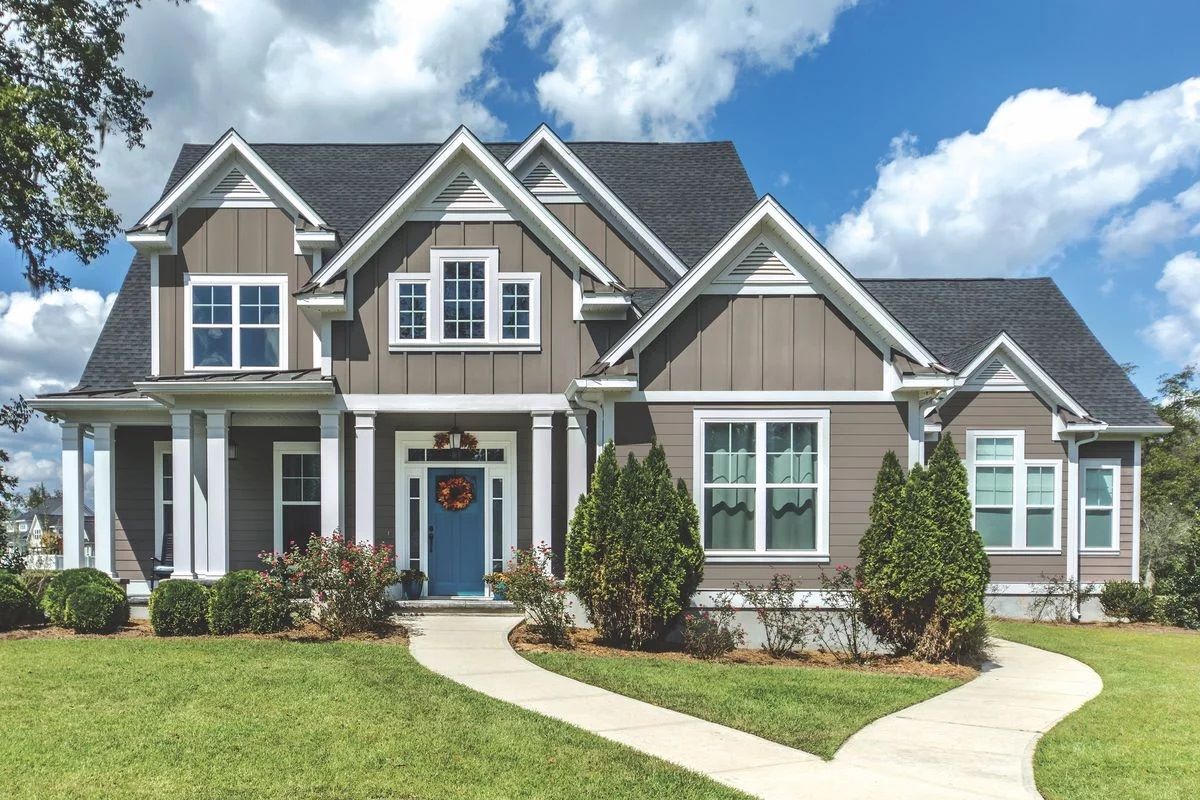

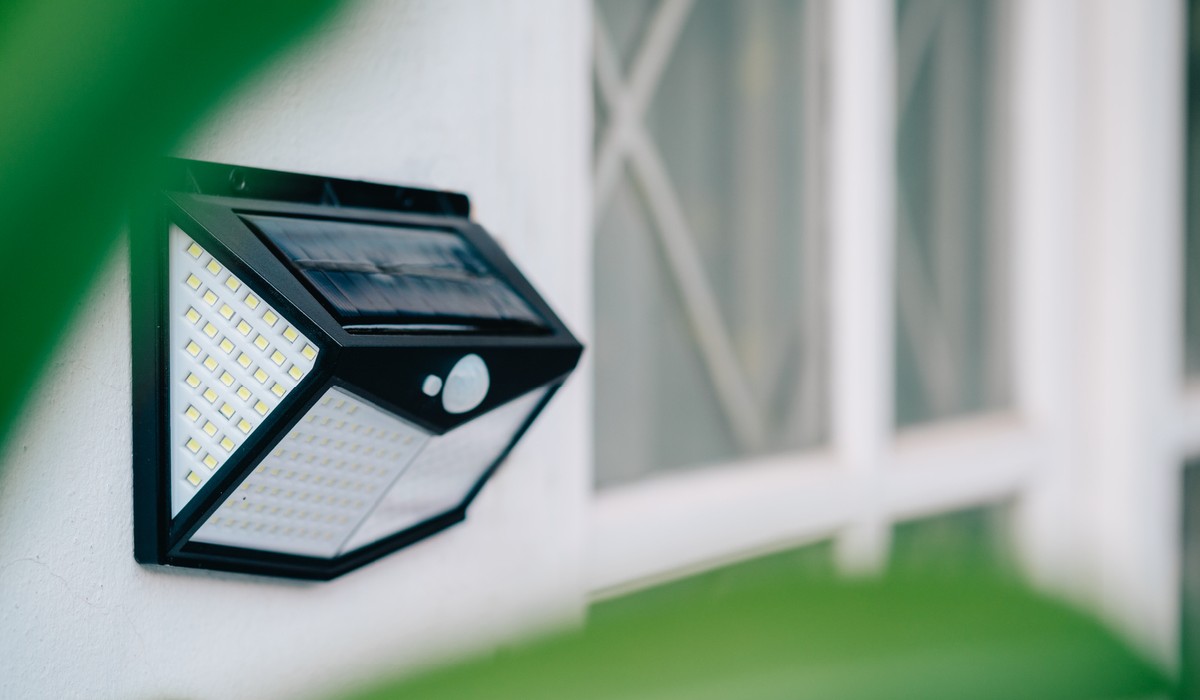
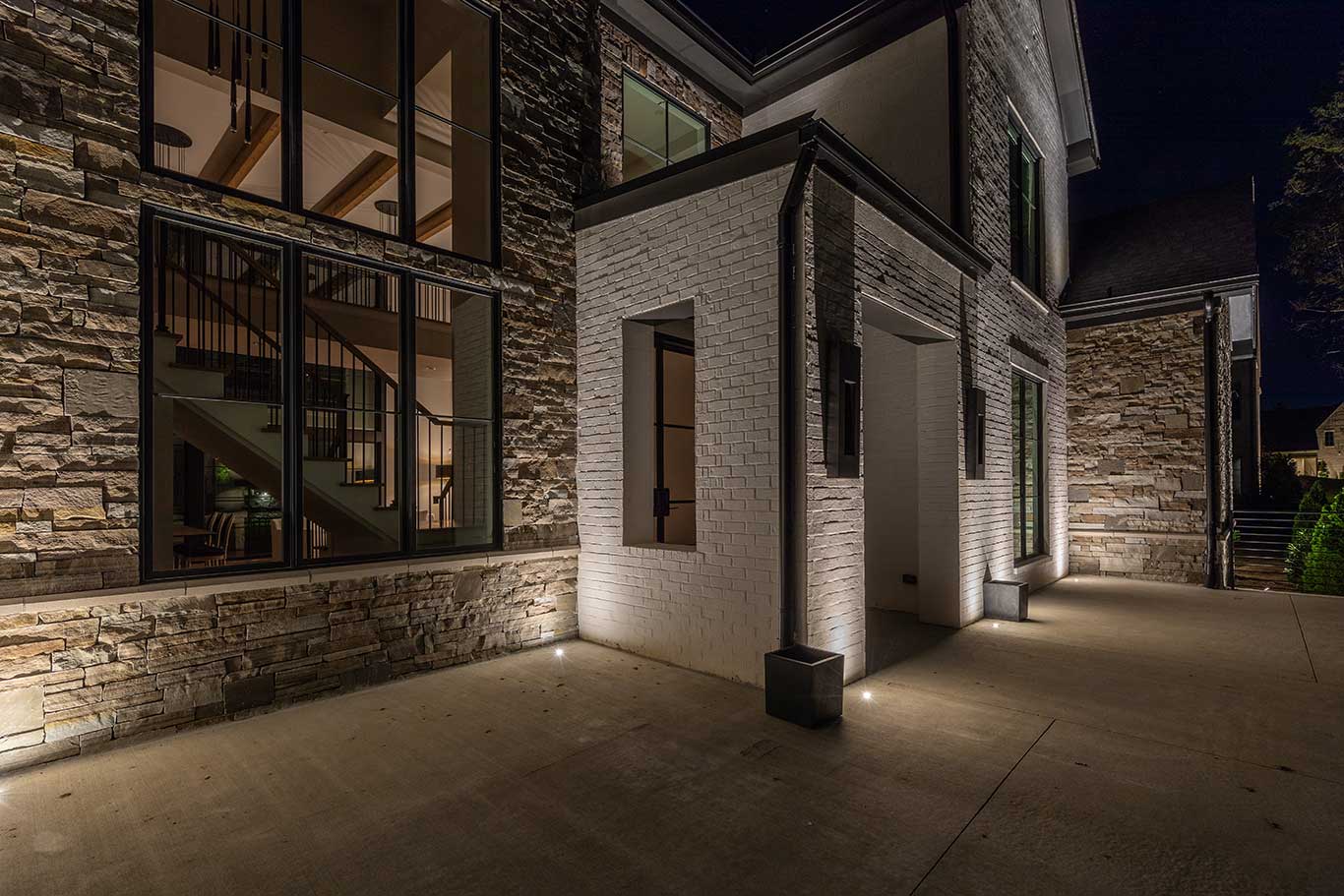
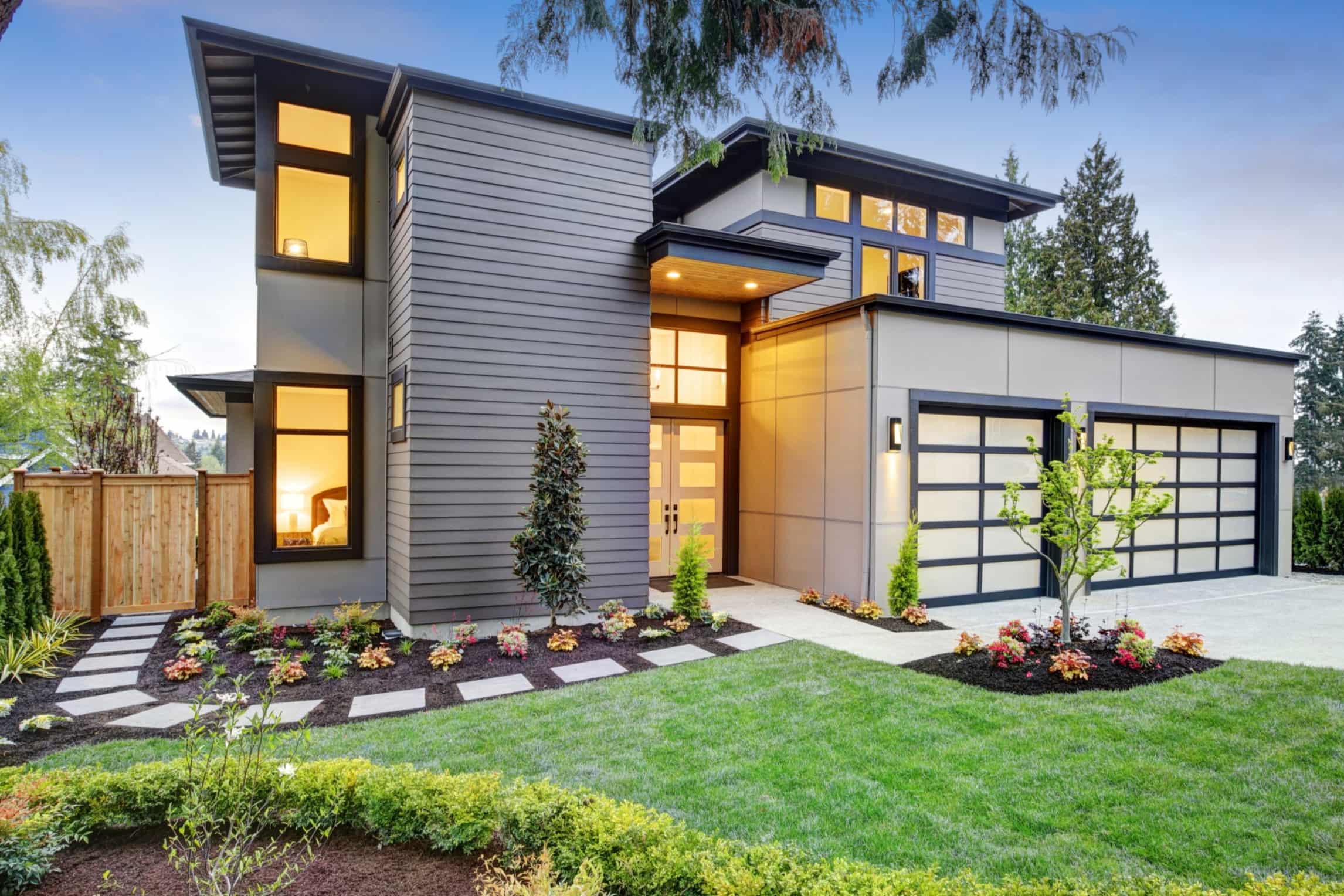





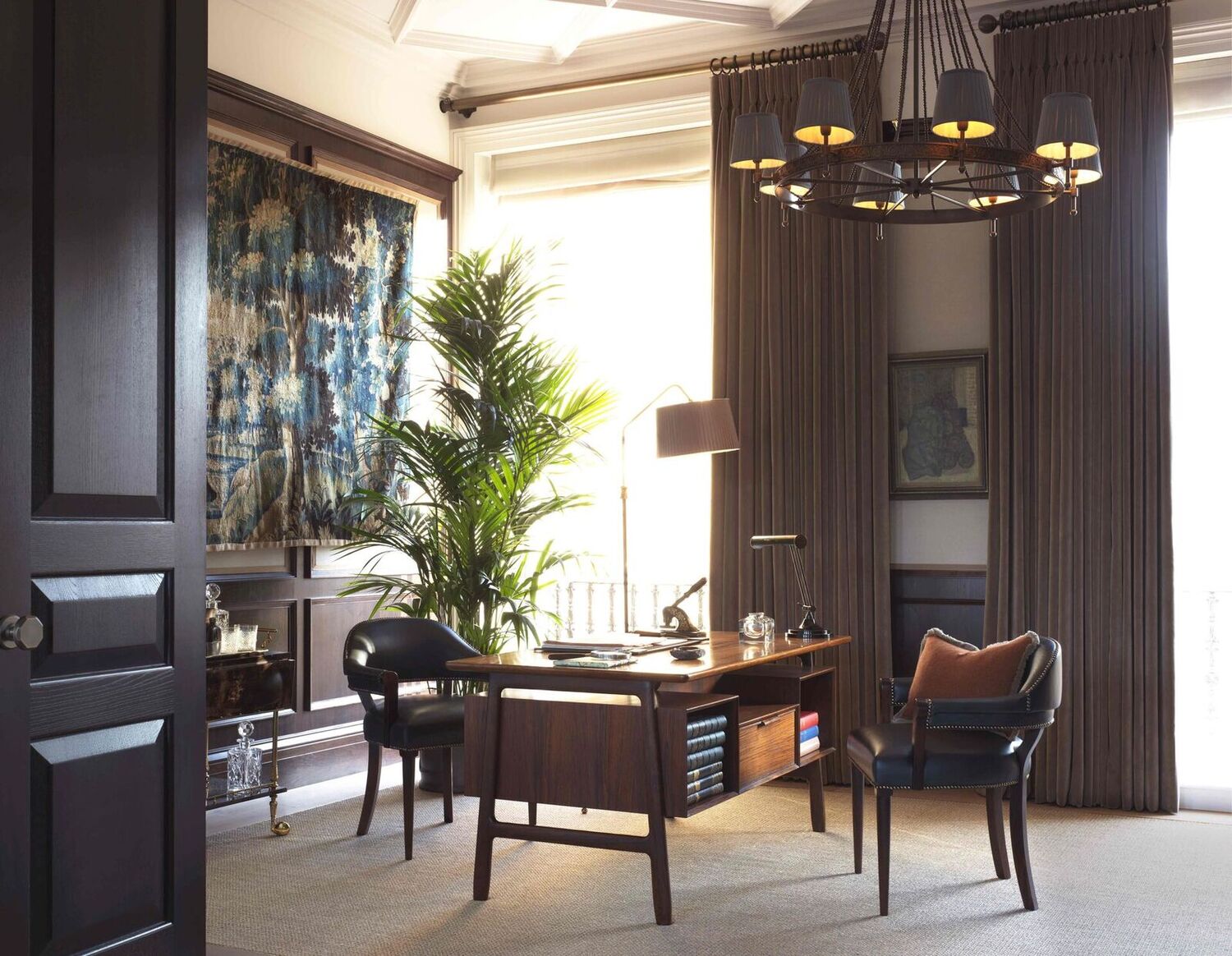

0 thoughts on “17 Ways To Make An Impact With Exterior Lighting For Your Home”